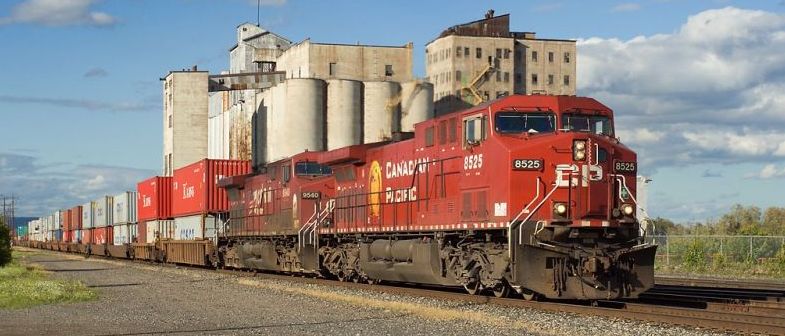
Train Addiction Help Line: 1.866.840.7777
Rapido Trains - HO Scale - GARX 36 ft Meat Reefers - Dugdale Packaging (GARX) (Yellow/Red Ends) 4-Pack #1 (SKU 224-121006)
Available On: May 1, 2013
The new Rapido USA HO scale wood reefer is based on a design built between 1937 and 1941 by General American Transportation (GARX). Although built with a wooden sheathed body and roof that made them look like a car from an earlier era, these GARX cars were modern for their time. They were constructed on a steel underframe of similar construction to boxcar underframes then in common use and featured AB brakes, Equipco brake wheels and housings and Barber S-1 trucks. More than 940 cars were built to this configuration making it one of the most numerous meat reefer designs, and they lasted in service well into the early 1970’s.
Reefers of this type were typically assigned AAR class “RSM”. They would normally be assigned to meat service only, running between meat packing houses and regional dealers throughout North America. Typically the meat would originate in the Midwest, where blocks of cars would then be moved to Chicago and then dispersed to their final destinations. Meat reefers from a wide variety of packing houses could be seen on the hottest freight trains of roads throughout the country.
Notable features of the General American meat reefer are wood body with three hinge doors (utilizing the GARX triangular hinge design), a wood roof with steel hatches and unique latches, side and end ladders, power handbrakes, and a steel underframe with a tabbed side sill. All of these features are included on the new Rapido USA model. Also found on the model is a FULL underframe with complete brake equipment, all new trucks with brake shoes in line with the wheel tread and new metal wheelsets and magnetic knuckle couplers. The coupler boxes are easily interchangeable for those who wish to utilize after market couplers and draft gear.
When built these cars were mostly painted yellow-orange with red ends and roof. Being built soon after the prohibition on “billboard” lettering schemes, the early lettering arrangements were typically fairly simple. Most cars carried GARX or URTX reporting marks. Some carried the name of the leasing packing company, while others did not. The latter were typically used in per-diem (daily rental) service and could be assigned to any packer that needed a car. The earliest cars had door hardware and ladders painted black, but early in the 1940’s cars started appearing with the hardware and doors painted body color. Also starting in the late 1940’s many of the cars started to appear with the reporting marks of leasing packers and schemes became bolder and more colorful. Our first group of paint schemes include both the flashy later schemes and the “plain Jane” schemes so popular with modelers interested in accuracy.
Rapido USA 37’ Meat Reefers Feature:
• US prototype
• Complete underbody with all piping
• Super-detailed Barber S-1 trucks
• Insulated metal wheelsets
• Accurate roof hatches and hardware
• See-through brake platforms
• Separate grabs and ladders
• Accurate paint schemes
• Multiple car numbers per scheme
• Metal Knuckle Couplers
Car #'s 3461, 3463, 3466, 3469
(GARX). Although built with a wooden sheathed body and roof that made them look like a car from an earlier era, these GARX
cars were modern for their time. They were constructed on a steel underframe of similar construction to boxcar underframes then
in common use and featured AB brakes, Equipco brake wheels and housings and Barber S-1 trucks. More than 940 cars were built
to this configuration making it one of the most numerous meat reefer designs, and they lasted in service well into the early 1970’s.
Reefers of this type were typically assigned AAR class “RSM”. They would normally be assigned to meat service only, running
between meat packing houses and regional dealers throughout North America. Typically the meat would originate in the Midwest,
where blocks of cars would then be moved to Chicago and then dispersed to their final destinations. Meat reefers from a wide variety
of packing houses could be seen on the hottest freight trains of roads throughout the country.?

$159.80 CDN